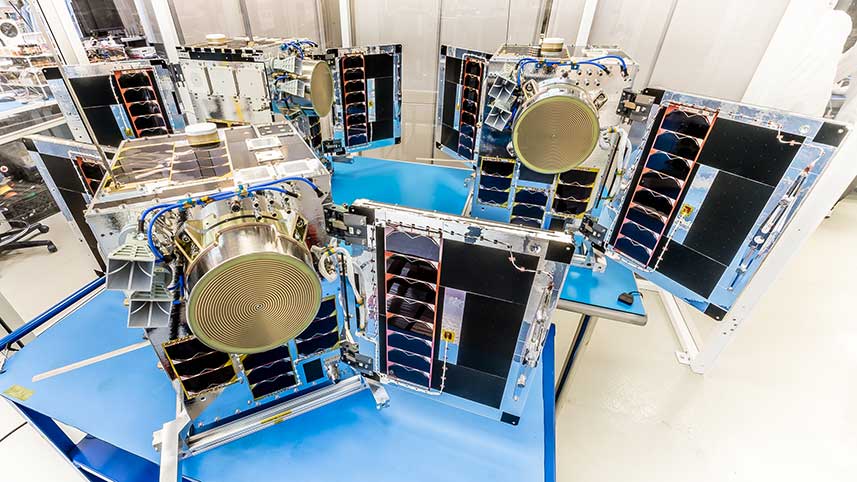Space Flight Laboratory (SFL) Completes On-Orbit Commissioning of HawkEye 360 Clusters 4 and 5 Microsatellites
15 RF Geolocation Microsatellites Now in Orbit

TORONTO, Ontario, Canada, September 2022 – Space Flight Laboratory (SFL) has completed on-orbit commissioning of six radio frequency (RF) geolocation microsatellites developed for HawkEye 360 of Herndon, Va. Cluster 4 launched on April 1, 2022, and Cluster 5 launched on May 25, 2022, bringing the number of microsatellites built by SFL for HawkEye 360 and now in orbit to 15.
“Operation of Clusters 4 and 5 has been transitioned to HawkEye 360 as planned,” said SFL Director Dr. Robert E. Zee. “The new microsatellites are ready to support HawkEye 360 as it scales to meet the growing worldwide demand for its commercial RF data and analytics services.”
The HawkEye 360 Constellation detects and geolocates RF signals for maritime situational awareness, emergency response, national security, and spectrum analysis applications. In addition to expanding HawkEye 360’s global revisit and collection capacity, Clusters 4 and 5 microsatellites include enhanced antenna functions for greater flexibility in detecting and geolocating signals across a wide range of frequencies, stated the Virginia company.
The two newest clusters have doubled on-orbit capacity to empower HawkEye 360 customers with actionable global insights. The expanded constellation can collect over a region of interest up to 16 times per day with an average revisit of 1.5 hours using enhanced payloads, additional ground stations, and optimized satellite management and data processing.
HawkEye 360 selected SFL due to the importance of formation flying by multiple satellites for successful RF geolocation. Clusters 2, 3, 4 and 5 have all been built on SFL’s space-proven 30kg DEFIANT microsatellite bus, with Cluster 6 slated to launch on Rocket Lab’s inaugural Electron mission from Launch Complex 2 on Wallops Island, Va., as early as December 2022.
SFL is a unique microspace provider that offers a complete suite of nano-, micro- and small satellites – including high-performance, low-cost CubeSats – that satisfy the needs of a broad range of mission types from 3 to 500 kilograms. Dating from 1998, SFL’s heritage includes 61 operational successes and 29 currently under construction or awaiting launch. These missions relate to Earth observation, atmospheric monitoring, ship tracking, communication, radio frequency (RF) geolocation, technology demonstration, space astronomy, solar physics, space plasma, and other scientific research.
In its 24-year history, SFL has developed CubeSats, nanosatellites, and microsatellites that have achieved more than 200 cumulative years of operation in orbit. These microspace missions have included SFL’s trusted attitude control and, in some cases, formation-flying capabilities. Other core SFL-developed components include modular (scalable) power systems, onboard radios, flight computers, and control software.
About Space Flight Laboratory (SFL)
SFL generates bigger returns from smaller, lower cost satellites. Small satellites built by SFL consistently push the performance envelope and disrupt the traditional cost paradigm. Satellites are built with advanced power systems, stringent attitude control and high-volume data capacity that are striking relative to the budget. SFL arranges launches globally and maintains a mission control center accessing ground stations worldwide. The pioneering and barrier-breaking work of SFL is a key enabler to tomorrow’s cost-aggressive satellites and constellations.
Download the specification sheet for all SFL platforms here.
SFL Contact:
Dr. Robert E. Zee
SFL Director
1-416-667-7400
Follow SFL on Twitter @SFL_SmallerSats

